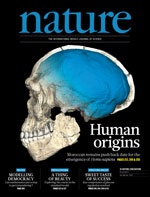Forest management certification is assumed to promote sustainable forest management, but there is little field-based evidence to support this claim. To help fill this gap, we compared a Forest Stewardship Council (FSC)-certified with an adjacent uncertified, conventionally logged concession (CL) in Gabon on the basis of logging damage, above-ground biomass (AGB), and tree species diversity and composition. Before logging, we marked, mapped, and measured all trees > 10 cm dbh in 20 and twelve 1-ha permanent plots in the FSC and CL areas, respectively. Soil and tree damage due to felling, skidding, and road-related activities was then assessed 2-3 months after the 508 ha FSC study area and the 200 ha CL study area were selectively logged at respective intensities of 5.7 m(3)/ha (0.39 trees/ha) and 11.4 m(3)/ha (0.76 trees/ha). For each tree felled, averages of 9.1 and 20.9 other trees were damaged in the FSC and CL plots, respectively; when expressed as the impacts per timber volume extracted, the values did not differ between the two treatments. Skid trails covered 2.9 % more of the CL surface, but skid trail length per unit timber volume extracted was not greater. Logging roads were wider in the CL than FSC site and disturbed 4.7 % more of the surface. Overall, logging caused declines in AGB of 7.1 and 13.4 % at the FSC and CL sites, respectively. Changes in tree species composition were small but greater for the CL site. Based on these findings and in light of the pseudoreplicated study design with less-than perfect counterfactual, we cautiously conclude that certification yields environmental benefits even after accounting for differences in logging intensities.
DOI:
https://doi.org/10.1007/s00267-012-0006-4
Dimensions Citation Count:
























